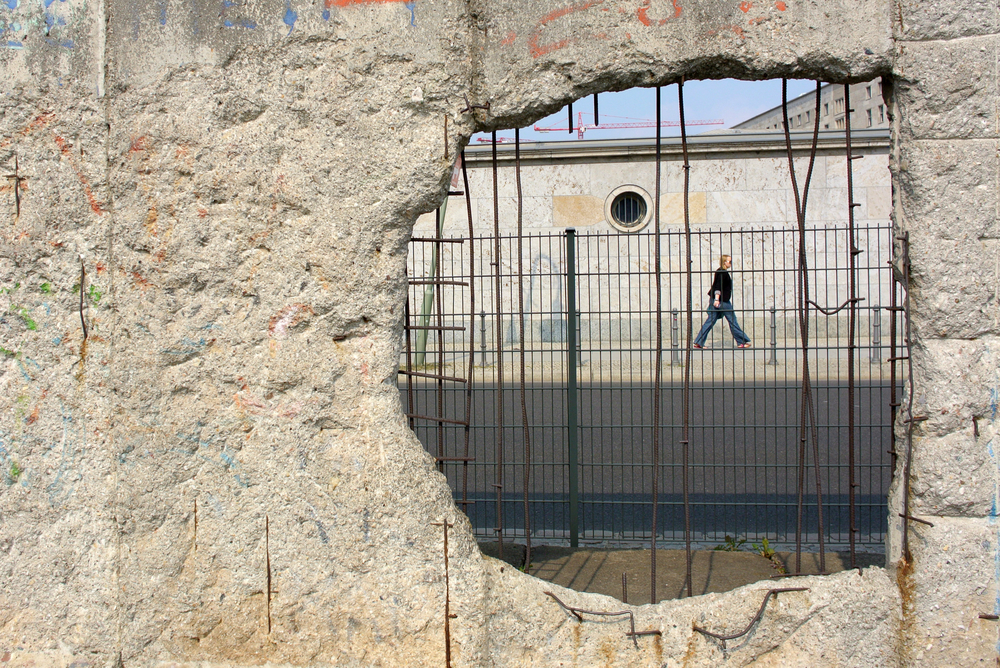Lessons from President Ronald Reagan for Tisha Ba’av and The Rebuilding of the Third Beit Hamikdash
On June 12, 1987, President Ronald Reagan delivered a memorable and inspiring speech at the base of the Berlin Wall. In the speech, Reagan extolled the virtues of democracy and freedom. He said:
“In the 1950’s, (Soviet Premier) Khrushchev predicted: “We will bury you.” But in the West today, we see a free world that has achieved a level of prosperity and well-being unprecedented in all human history…. After these four decades, then, there stands before the entire world one great and inescapable conclusion: Freedom leads to prosperity. Freedom replaces the ancient hatreds among the nations with comity and peace. Freedom is the victor.”
President Reagan noted that Gorbachev himself had initiated programs of openness and liberalization and that the Soviet Union had taken baby steps towards freedom. He then challenged Gorbachev and said:
“General Secretary Gorbachev, if you seek peace, if you seek prosperity for the Soviet Union and Eastern Europe, if you seek liberalization: Come here to this gate! Mr. Gorbachev, open this gate! Mr. Gorbachev, tear down this wall!”
Reagan’s speech, in addition to being ranked by Time magazine as one of history’s ten best speeches, helps to explain a difficult section of Talmud.
The Talmud, in Tractate Yoma page 9b, notes that the first Temple was destroyed because of the three cardinal sins of idolatry, murder and illicit sexual relationships. The Talmud then asks,
Aval Mikdash Shayne shehayoo oskim beTorah, ubemitzvoth, ugemilut chasadim – mipnay mah nechrav? Mipnay shehayata bo sinat chinam.
But the Second Temple where (the people) were involved with Torah, mitzvot and acts of kindness – why was it destroyed? Because of baseless hatred.
What is surprising is that the Talmud states that the generation which experienced the destruction of the Second Temple was a generation of kindness. They gave charity, visited the sick and comforted mourners. They were seemingly helpful, thoughtful and considerate. Yet, in an apparent contradiction, the Talmud then states that the same generation which was oskim begemilut chasadim – involved with kind deeds, was guilty of the sin of baseless hatred. Generally, people who perform acts of kindness don’t slander, good people don’t insult others, and charitable people do not engage in acts of baseless hatred. How can it be that the generation that hated one another, was also a generation of goodness and chesed?
Perhaps, the answer is that the Jewish people built “walls” between their respective communities. If someone belonged to a certain synagogue, dressed the way that the members of that community dressed, and practiced Judaism in the manner that the congregation practiced, then that individual would be helped. Loans would be given, support would be offered, as people would literally give, the “shirt off their backs.” But if someone was a member of a different synagogue, and did not practice as a given congregation practiced, then that particular Jew was shunned for being different, and “walls” as impenetrable as the Berlin Wall were erected.
G-d gave the Temple as a house of worship, prayer and devotion to all Jews. If we, for no valid reason, build walls and erect barriers between ourselves, then as a consequence, the walls of the Temple almost by definition, have to fall.
The Talmud in Tractate Taanit P. 29a records in the name of Rav Yehudah the son of Rav Shmuel Bar Shilat,
Keshem, meshenichnas Av Mimatim Besimcha, kach meshenichnas Adar Marbim Besimcha.
Just as, when (the month of) Av enters we decrease happiness, so too, when (the month of) Adar enters we increase happiness.
One way to understand the juxtaposition of the month of Adar to the month of Av, is that Adar and the story of Purim, is the antidote for Av and the fast of Tisha Ba’av.
In Megillat Esther the Jewish people united to fast, pray and fight, and the leader is described as belonging to both the tribes of Judah and Benjamin: Eesh Yehudee hayah beShushan habirah ushmo Morcechai… Eesh Yemini.
Mordechai was able to break down the barriers and divisions between the Jewish people and shortly after the Purim story, the Second Temple was built.
If we truly want the Beit Hamikdash to be rebuilt and the walls of the Temple to stand once again, then we must tear down the walls that we as Jews place between ourselves. While there are real issues and differences between Jews, too often we forget that we are one family, with a common history and destiny. Ultimately, if we are bnay av echad, the sons and daughters of one father, artificial divisions between Jews are erroneous and illogical.
As Secretary of State George Schultz said about the Berlin Wall:
…”for anyone who came and looked at the Wall, you couldn’t help but say, “tear down this wall.” That was your instinctive reaction to it. It was just something that shouldn’t be there.”
Similarly, the artificial walls that we place between ourselves as Jews, simply “shouldn’t be there.”
Maybe it is time to say to the “Mr. Gorbachev” inside ourselves, “Tear down these walls.”

